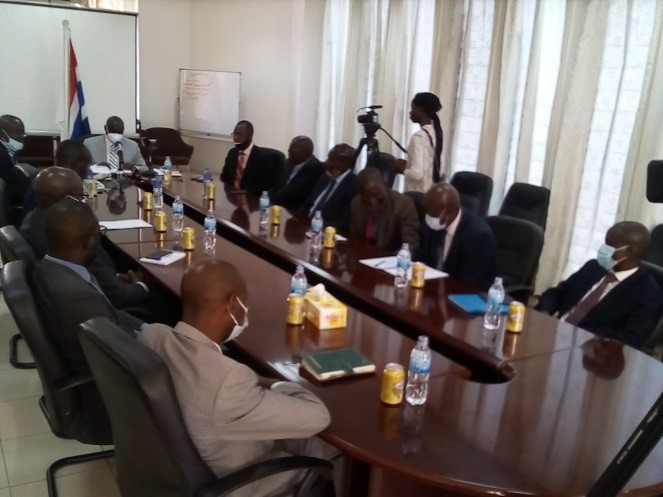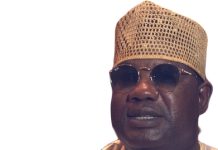By: Kebba AF Touray
Mr. Buah Saidy, the newly appointed Governor of the Central Bank of the Gambia, said the outstanding domestic debt stock, as at end November 2020, increased from D33.1 billion(36.9) percent of GDP, to D34.8 billion, which represents 35.3 percent of the Gross Domestic Product (GDP).
Governor Saidy revealed this on Thursday 3rd December 2020, at the Central Bank of the Gambia (CBG), during his maiden Monetary Policy Committee forum dubbed MPC meeting.
He said that the total revenue and grants, in the first three quarter of 2020, stood at D14.2 (14.4percent GDP), compared to D12.3 billion (14.0 percent GDP) in the same period in 2019, with an increment in the government expenditure and net lending by 12.7 percent to 16.4 billion (16.7 percent GDP) from D14.5 billion (16.6 percent of GDP) in the first nine months of 2019.
He added: “Recurrent expenditure increased by 29.9 percent to 12.0 billion (12.2 percent GDP) compared to D9.3 billion (10.5 percent GDP) in the first nine months of 2019. Capital expenditure on the other hand, declined by 17.4 percent to D4.4 billion (4.4 percent GDP)”.
Governor Siady lamented: “Tax revenue rose by 1.6 percent to D7.7 billion (7.9 percent GDP) in the first three quarters of 2020 from D7.6 billion (8.7 percent GDP) in the corresponding period a year ago. Non-tax revenue also increased by 82.9 percent to D2.6 billion (2.6 percent GDP) in the first nine months of 2020, from D1.4 billion (1.6 percent GDP) in the same period last year.”
He stressed: “The budget deficit excluding grants, however, worsened to a deficit of D6.1 billion (6.2 percent of GDP) in the nine months of 2020, compared to D5.5 billion (6.3 percent of GDP) in the same period in 2019.”
He also said that inflation remained largely subdued, due to weak domestic demand, moderate global oil prices and stable exchange rate, whereas headline inflation declined to 5.6 percent in October 2020, from 7.5 percent in October 2019, largely driven by the deceleration in non-food inflation.
“The consumer price inflation of food and non-alcoholic beverages decreased from 7.3 percent in October 2019 to 6.6 percent in October in 2020. The major drivers of food inflation during the period were bread, cereals, meat, fish and non-alcoholic beverages. Non-food inflation decelerated to D4.3 percent in October 2020 from 8.0 percent in October 2019. Consumer price inflation for all the components of non-food inflation decreased except transportation and miscellaneous items”, he explicated.
He also cited that the dalasi has depreciated against the US dollar by 1.4 percent, Euro by 6.3 percent and pound sterling by 1.1 percent from January to November 2020.
He highlighted that the Committee has observed among others that economic activities in the Gambia, remains weak reflecting the effects of pandemic, but quicker recovery is anticipated in 2021, rebound in agriculture and strong fiscal and monetary support, and the worsened of current account in the first three quarters of 2020.
He said: “taken the factors observations into consideration, the committee has decided to maintain the Monetary Policy Rate (MPR) at 10 percent, maintain the Required Reserve(RR) at 13 percent, maintain the interest rate on the standing deposit facility at 2.5 percent and the standing lending facility at 11.0 percent(MRP plus 1 percentage point”.



















